Ever wondered why those 12V powersupplies for the lights in your bathroom generate so much disturbance on the Shortwave and Mediumwave bands?
And do you know that it is easy to both remove the noise and save a factor 10 in energy?. .
Here follows a description of how the supply works, and most of all how to modify standard wallchargers to supply LED lamps and remove the radio disturbance.
The following picture shows our bathroom mirror-cabinet that has 3 built-in halogen spots.
Its lighting is quite good, but it uses 3x 20W GU4 halogen bulbs that get very hot, and when the lights are switched on, all weak radio signals on the Shortwave and Mediumwave bands are disturbed by a grim radio noise!

The 12V switchmode powersupply (SMPS) for the lamps can be found inside the 230V outlet-box. It can deliver lots of power in a little size.

When examined closely, it turns out to be a self-oscillating device with 2 power transistors, a big output toroid transformer, and a little current-sensing transformer, and there are no big electrolytic capacitors at all :
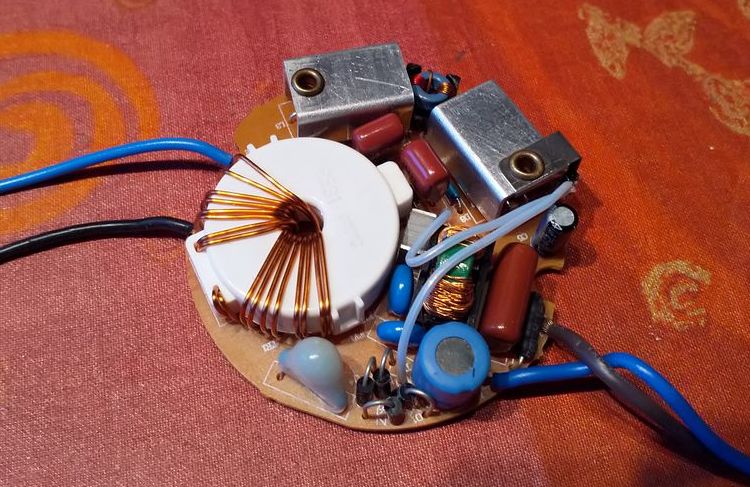
Also, the secundary winding of the big transformer is directly connected to the output wires! No rectifier or filtering!!.
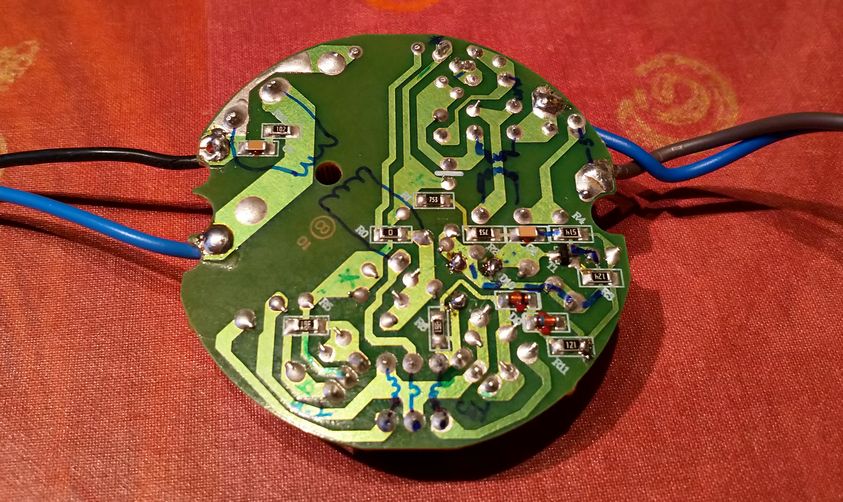
The schematic was drawn, and I really had to check this several times because it is a bit unexpected.

From the schematic we learn that it is a crude self-oscillating half-bridge with T2,T3 and C2,C3, getting positive feedback via the current transformer TR2.
TR1 is the output transformer, and a little transistor (T1) takes care of the short-circuit protection.
The absence of a big electrolytic capacitor after the mains rectifier (C8 is only approx 200nF), results in a 100% AM (Amplitude Modulation) of the oscillation.
The voltage over C4 and the Diac D6 provide the start-bias for the oscillation, and this is activated for each rectified 50Hz cycle...
Here we see an oscilloscope picture of the 12V output for a screen time of 20ms.
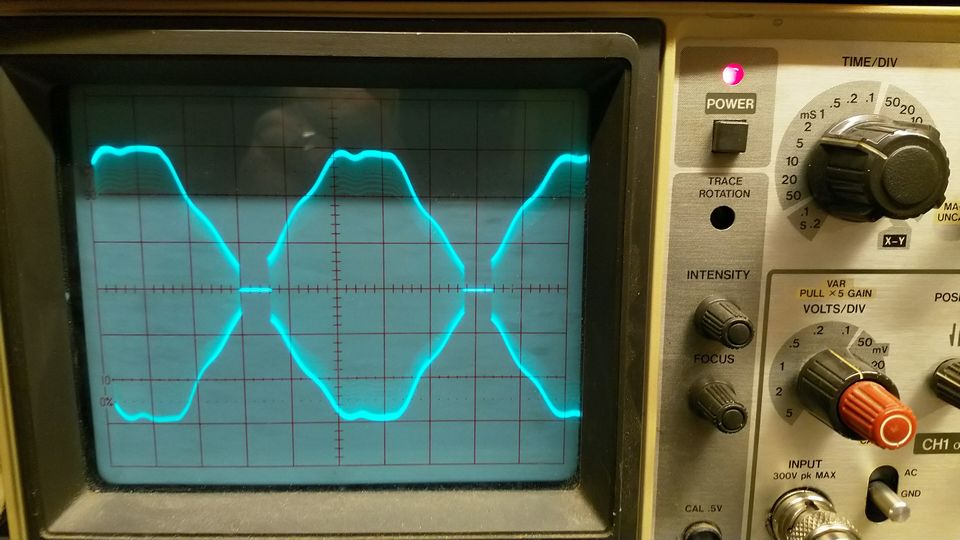
When zooming in on the oscillation waveform itself (a screen time of 5usec/division), we discover that the frequency is approximately 1/20usec = 50kHz, and it is jittering a lot, so it is also FM modulated!
The sharp corners of the waveform produce a lot of harmonic power, and this is radiated by the wires to the lightbulbs, which is the reason that the thing is producing so much radio disturbance.
The 230V side of this SMPS has OK filtering, but the output, where the big currents are drawn, has nothing...
A terrible noise-generator like this can surely only get the CE marking when the output is loaded directly with a resistor, without any wires!!
(but on the case, see the second picture, it says "secundary cables up to 4m long")

The modification:
The radiation could possibly be reduced by using twisted wires to the bulbs. Also a RF filter could be added in the 12V output, but that would probably reduce the efficiency of the SMPS.
A better solution is to reduce the needed current by using LED bulbs, and swapping the SMPS with a less crude circuit with better filtering.
The replacement of the G4 halogen bulbs with LED bulbs was only possible with some special low-profile LED "Nordlux G4 pin-base LED bulb 2,1 W Ø2,6 cm", because of the low mounting hight available:

The funny thing with most 12V LED bulbs is, that they have their own built-in SMPS.
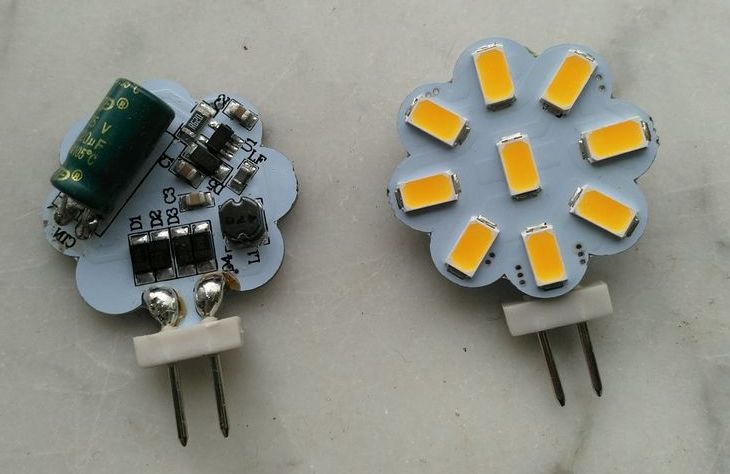
It even has a bridge-rectifier in the circuit, so it can be used with an AC powersupply.
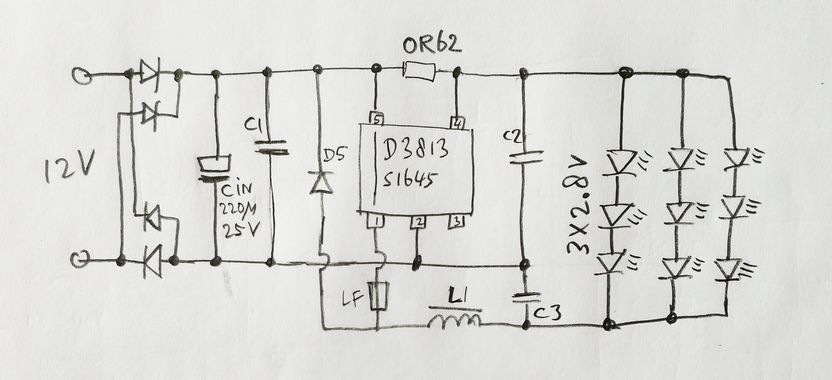
A powersupply for 3 of these bulbs, will have to deliver 3x2=6W, thus 12V and 0.5A.
It has to be isolated from the mains.
This can be done by using 2 standard small USB chargers in series, when these are modified to give 6V out instead of 5V.
In fact, the output voltage is not that critical, as the SMPS inside the bulb will have some range to adjust the output current to the LEDs.
The following wallcharger was selected from my junkbox, as the board had a good formfactor and it looked decent emc-wise.

It's a Ktec model KSA0050500100VUU, and the schematic looks like this:
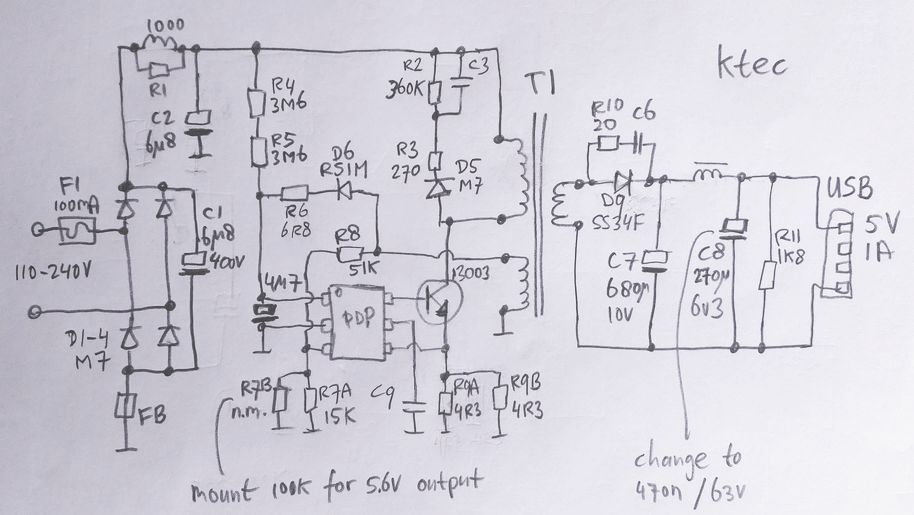
It turned out that adding a 100k resistor on the spot of the not mounted R7B raises the output voltage from 5 to 5.6V, which is fine for our purpose.
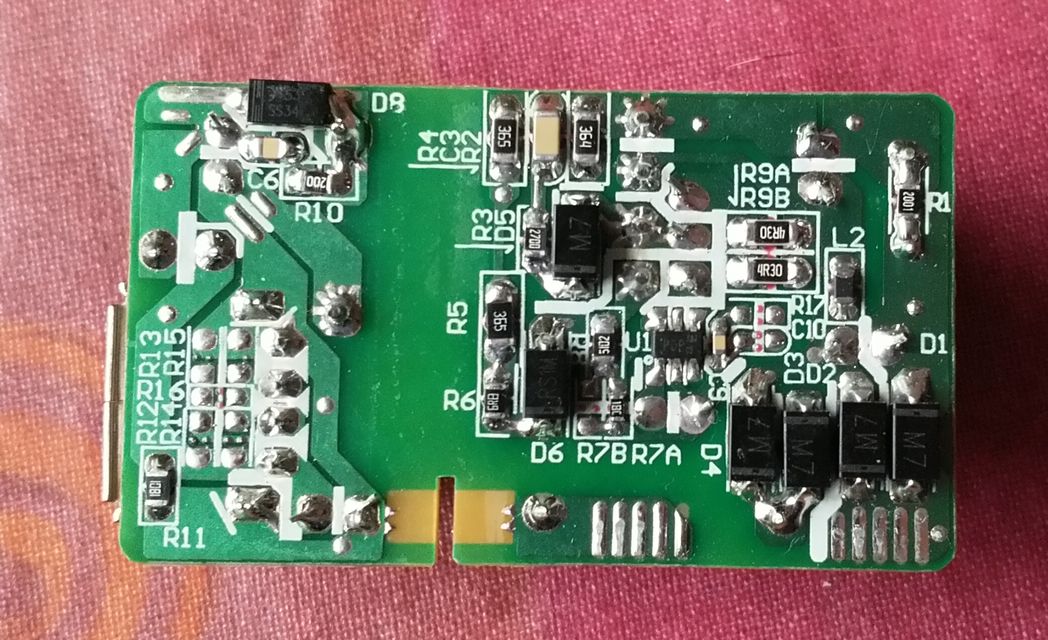
The output capacitor C8 has a bit low voltage rating, and it would also be better with a ceramic capacitor for high-frequency filtering, so it was exchanged with a high quality 470nF cap, and the USB connector was removed.
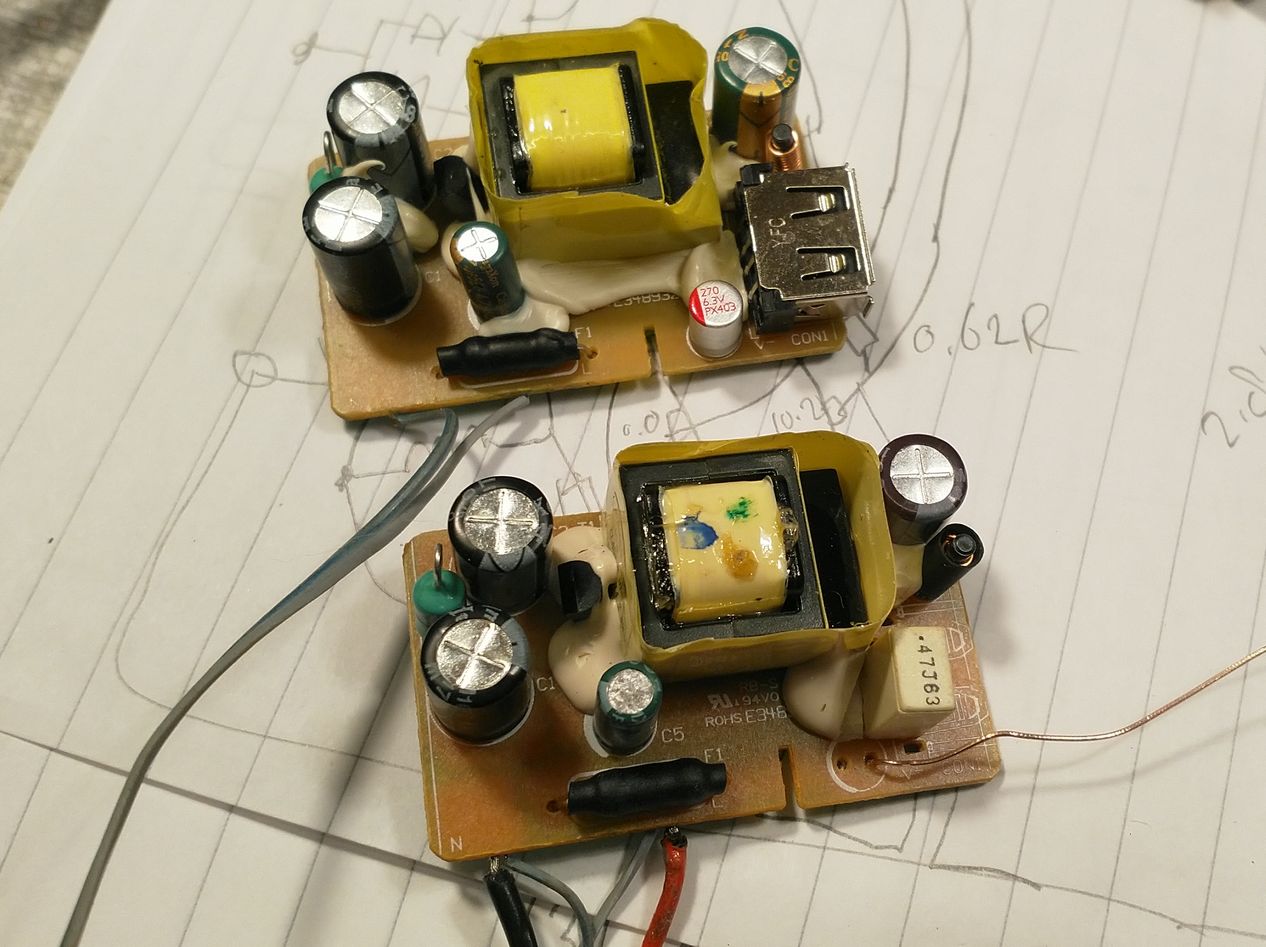
And finally 2, with parallel 230V input side and series outputs, safely into a branchbox, which nicely fitted in the position of the original round box in the cabinet:

The result:
No more radio noise, the same amount of light as before, and a power useage of 6W instead of 60W !!.
this page is made with n073p4d 2